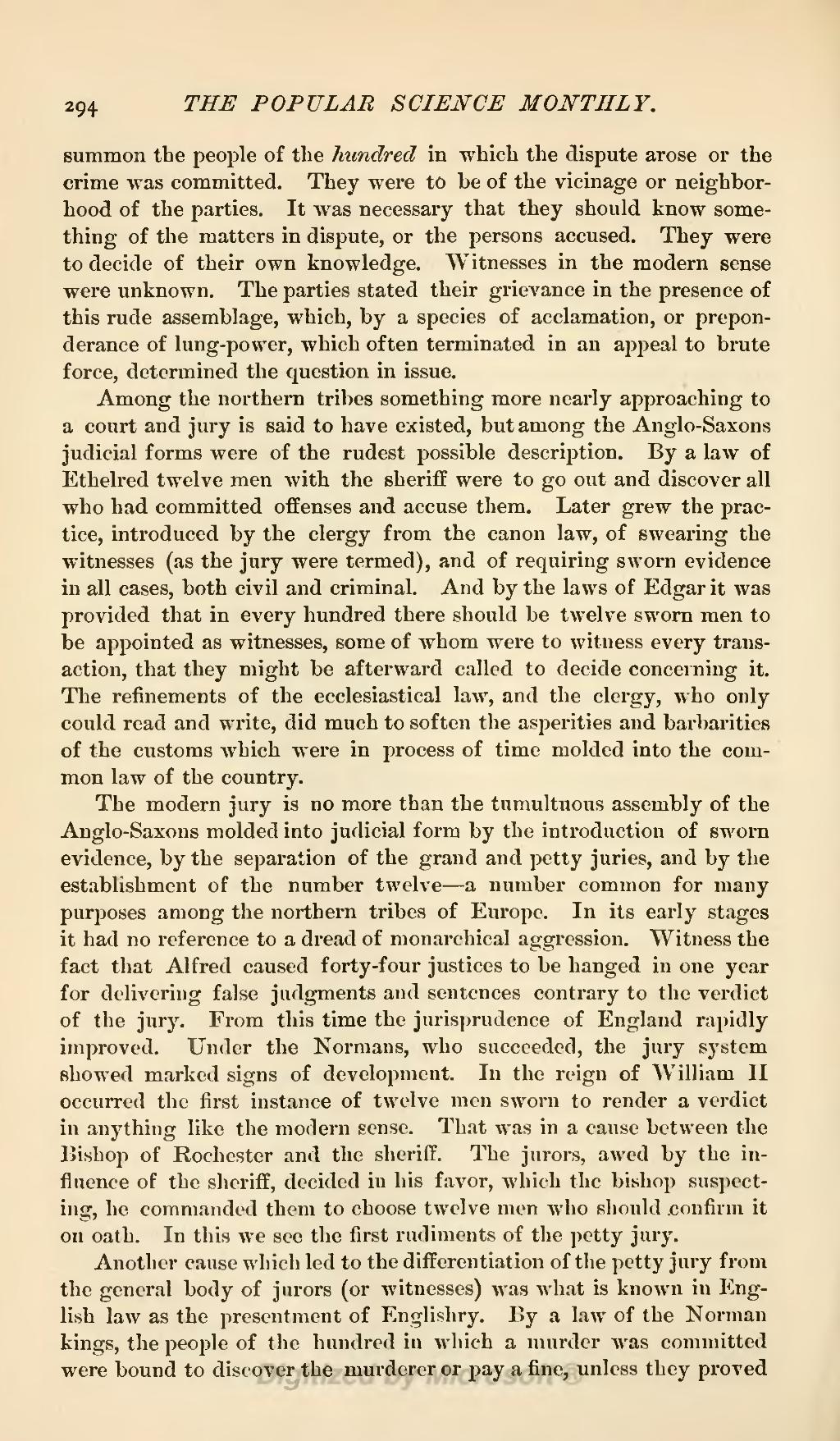summon the people of the hundred in which the dispute arose or the crime was committed. They were to be of the vicinage or neighborhood of the parties. It was necessary that they should know something of the matters in dispute, or the persons accused. They were to decide of their own knowledge. Witnesses in the modern sense were unknown. The parties stated their grievance in the presence of this rude assemblage, which, by a species of acclamation, or preponderance of lung-power, which often terminated in an appeal to brute force, determined the question in issue.
Among the northern tribes something more nearly approaching to a court and jury is said to have existed, but among the Anglo-Saxons judicial forms were of the rudest possible description. By a law of Ethelred twelve men with the sheriff were to go out and discover all who had committed offenses and accuse them. Later grew the practice, introduced by the clergy from the canon law, of swearing the witnesses (as the jury were termed), and of requiring sworn evidence in all cases, both civil and criminal. And by the laws of Edgar it was provided that in every hundred there should be twelve sworn men to be appointed as witnesses, some of whom were to witness every transaction, that they might be afterward called to decide concerning it. The refinements of the ecclesiastical law, and the clergy, who only could read and write, did much to soften the asperities and barbarities of the customs which were in process of time molded into the common law of the country.
The modern jury is no more than the tumultuous assembly of the Anglo-Saxons molded into judicial form by the introduction of sworn evidence, by the separation of the grand and petty juries, and by the establishment of the number twelve—a number common for many purposes among the northern tribes of Europe. In its early stages it had no reference to a dread of monarchical aggression. Witness the fact that Alfred caused forty-four justices to be hanged in one year for delivering false judgments and sentences contrary to the verdict of the jury. From this time the jurisprudence of England rapidly improved. Under the Normans, who succeeded, the jury system showed marked signs of development. In the reign of William II occurred the first instance of twelve men sworn to render a verdict in anything like the modern sense. That was in a cause between the Bishop of Rochester and the sheriff. The jurors, awed by the influence of the sheriff, decided in his favor, which the bishop suspecting, he commanded them to choose twelve men who should.confirm it on oath. In this we see the first rudiments of the petty jury.
Another cause which led to the differentiation of the petty jury from the general body of jurors (or witnesses) was what is known in English law as the presentment of Englishry. By a law of the Norman kings, the people of the hundred in which a murder was committed were bound to discover the murderer or pay a fine, unless they proved

